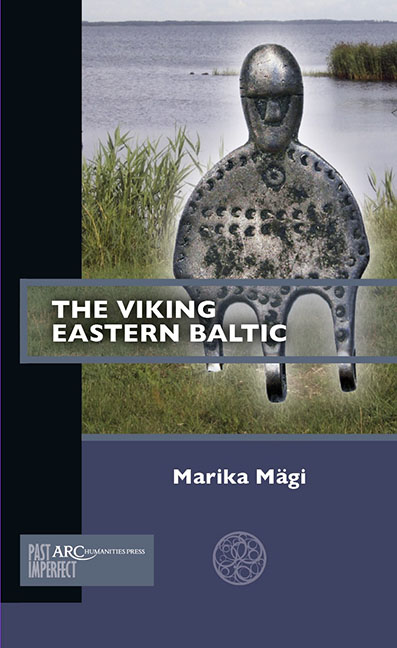Book contents
- Frontmatter
- Contents
- List of Illustrations
- Introduction
- Chapter 1 Different Cultures, Different Modes of Communication
- Chapter 2 Eastbound Routes Gain Momentum
- Chapter 3 Baltic Sea Warriors
- Chapter 4 The High-Point of Scandinavian Eastward Activity
- Chapter 5 End of the Viking Age
- Conclusion
- Further Reading
- Frontmatter
- Contents
- List of Illustrations
- Introduction
- Chapter 1 Different Cultures, Different Modes of Communication
- Chapter 2 Eastbound Routes Gain Momentum
- Chapter 3 Baltic Sea Warriors
- Chapter 4 The High-Point of Scandinavian Eastward Activity
- Chapter 5 End of the Viking Age
- Conclusion
- Further Reading
Summary
The Viking Age in the Eastern Baltic is a subject that has frequently been treated in a national romantic vein, with a spotlight on the archaeologically rich eleventh and twelfth centuries. The so-called Viking Age “proper” is often overshadowed by the closing centuries of what is considered in the region as prehistory, and the researchers in the Baltic States and Finland focusing on this period are few and far between. This book has suggested some reasons why the ninth and tenth centuries are under-researched in Eastern Baltic archaeology.
Perhaps the paramount reason for this gap is the Baltic Finnic funeral tradition that did not include any grave goods until the second half of the tenth century. Another major factor was without doubt the political situation prevailing in the twentieth century (and even earlier) that resisted the inclusion of Estonian and Latvian archaeological material in international studies. Linguistic and cultural differences between the regions of the Eastern Baltic have also discouraged a cross-regional approach, and research is predominantly fixated on the researcher's native country or language-group area.
As shown in this book, the Viking Age Eastern Baltic could indeed be divided into two larger spheres based on their language and the concomitant culture: the Baltic Finnic and the Baltic. Viking Age trade, the role of the maritime element in the local culture, contacts, and cultural influences from east and west all functioned differently in these spheres. Recognition of this is crucial if we want to have an adequate picture of the processes operating in the Viking Age Baltic Rim.
We have also shown the crucial role in interpreting the eastern expansion of Viking Age Scandinavia of the common cultural sphere of warriors that emerged in the East Scandinavian and Baltic Finnic coastal areas. This shared cultural milieu dates back to the centuries preceding the Viking Age, and was evidently based on not just raids on each other but also on close personal contacts, adopted values, and beliefs. Archaeologically, the shared cultural milieu of warriors ren-ders it somewhat difficult to decipher what is a “Scandinavian character” in the eastern territories, thus illustrating the international and multicultural nature of the processes at work during the period.
- Type
- Chapter
- Information
- The Viking Eastern Baltic , pp. 93 - 96Publisher: Amsterdam University PressPrint publication year: 2019



